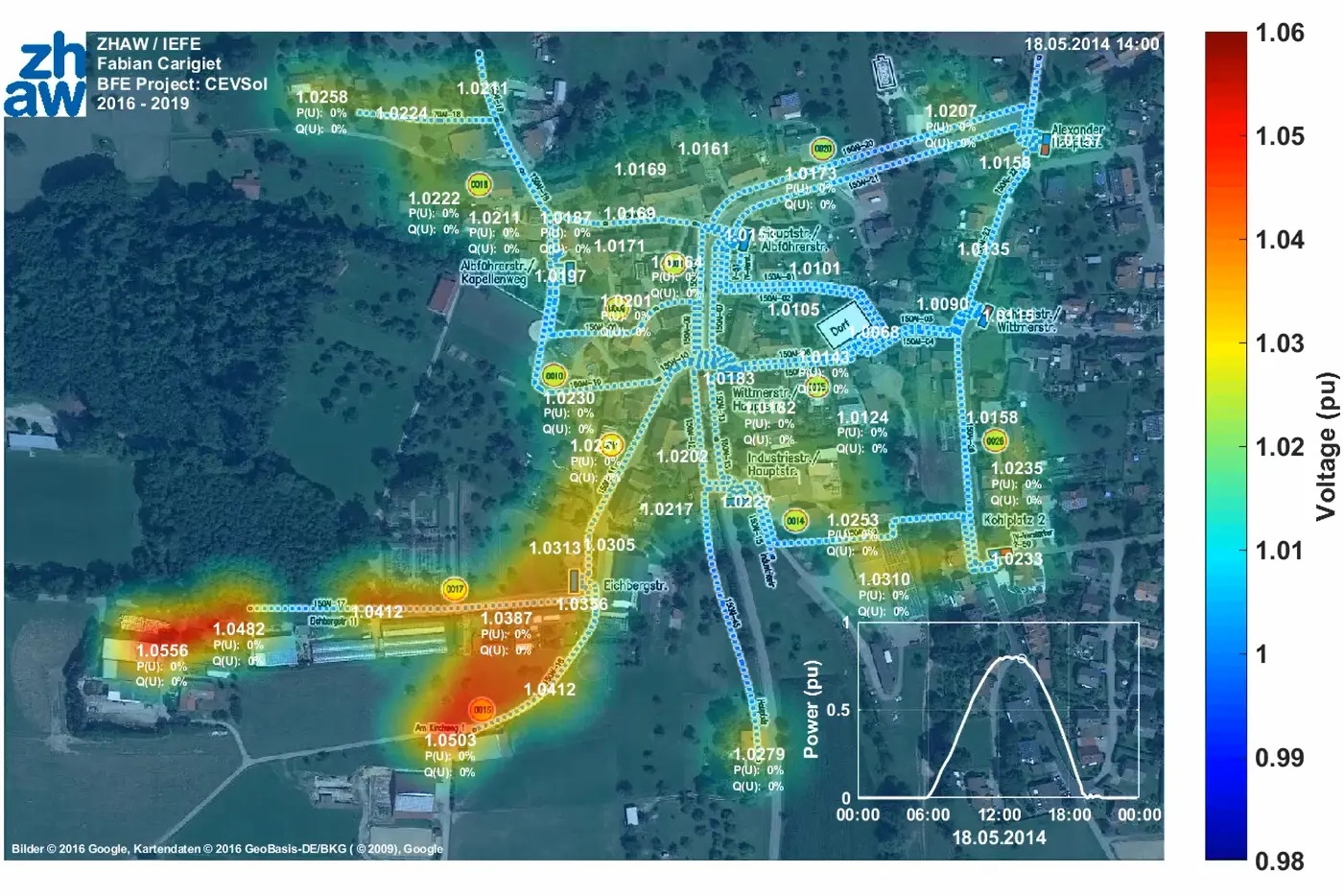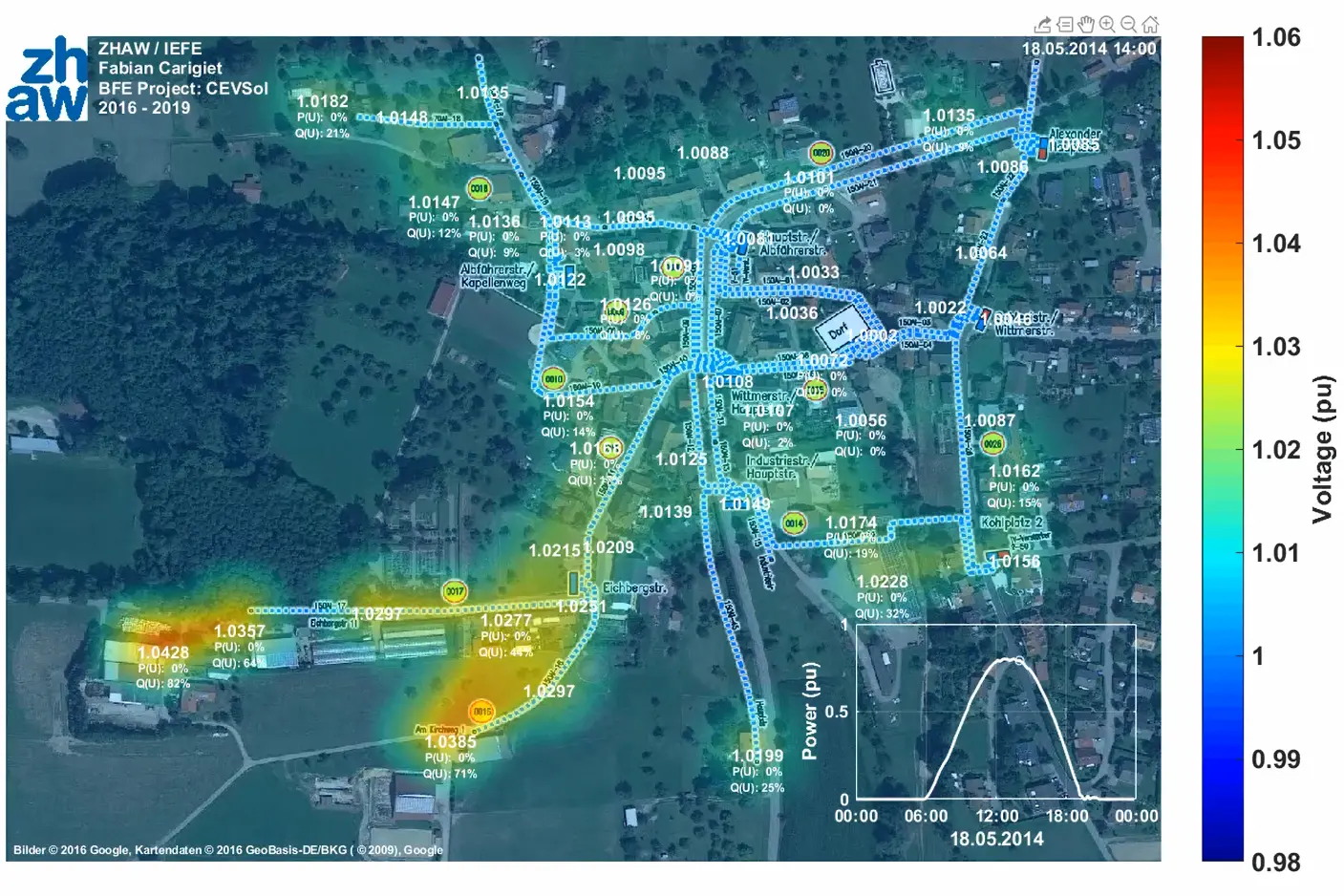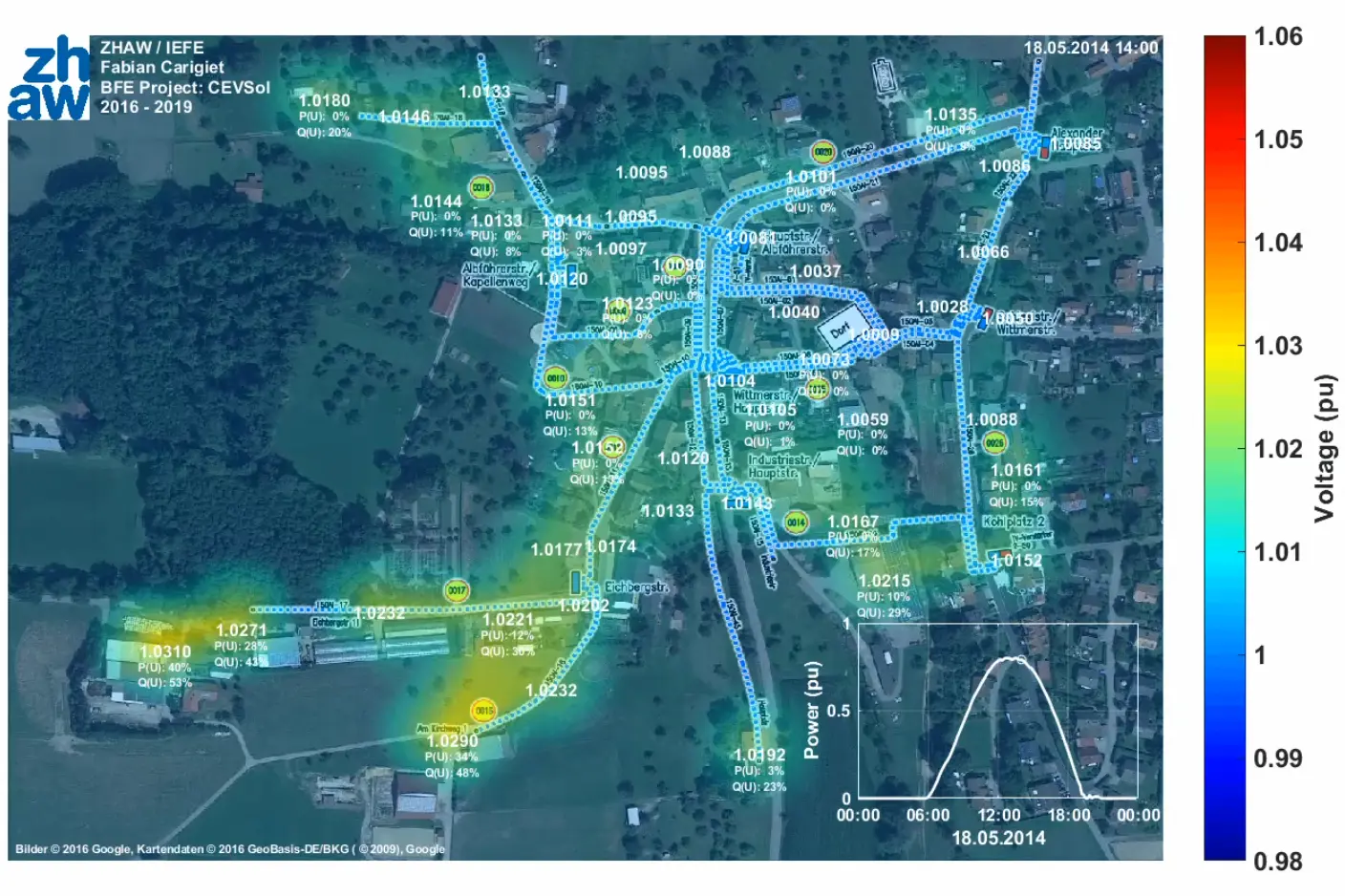How photovoltaic systems contribute to voltage regulation
Photovoltaics is one of the most important technologies for renewable energy supply. In addition to clean electricity, however, it causes voltage fluctuations in the power grid. On behalf of the Swiss Federal Office of Energy, ZHAW researchers have shown how this problem can be solved at its source.
![[Translate to english:] [Translate to english:] og:image](/storage/_processed_/3/3/csm_Titelbild_CEVSol_fc61f4d5c4.webp)
Researchers from the ZHAW Institute of Energy Systems and Fluid Engineering (IEFE) have investigated how the expansion of photovoltaics affects low-voltage grids and which measures can be taken against voltage fluctuations. The researchers were provided with an optimal measuring environment on German soil. The village of Dettighofen near Schaffhausen covers around 45 percent of its energy requirements with photovoltaic systems and is therefore suitable for investigating fluctuations in the grid voltage. As early as 2014, IEFE researcher Fabian Carigiet carried out the first measurements on site. The result: "Even then, we identified voltage problems. Subsequently, the CEVSol project was set up in 2015 and 2016".
A clear favourite and promising results
The IEFE researchers recommend regulating the voltage as soon as it is fed in from the photovoltaic systems. This is because each of these systems has an inverter which converts the direct current from the photovoltaic modules into alternating current. The alternating current can then be fed into the grid. But the inverters can do more than that: By regulating active and reactive power (see info box), they are able to reduce voltage fluctuations. As head of the IEFE Photovoltaics Research Group, Franz Baumgartner is clearly in favour of this method: "Photovoltaic systems can lead to voltage limits being exceeded, but with their inverters they also offer the means to solve or at least defuse this problem; we should take advantage of this opportunity".
Voltage maintenance through active and reactive power control
Active power is the power that can be used. Reactive power cannot be used by the consumer and is therefore fundamentally undesirable, as it places additional strain on the grid without providing any added value.
Reactive power can be useful for voltage regulation. By controlling the reactive power (reactive power control), the voltage in the grid can be reduced without reducing the feed-in power of the photovoltaic system. However, if the active power is regulated (active power control), the photovoltaic system inevitably feeds less power into the grid.
The measurements taken by IEFE researchers in Dettighofen clearly show the effectiveness of the method: If the reactive power is regulated during the feed-in, the voltage fluctuations can be reduced from seven to around four percent. If the active power of the photovoltaic systems is also regulated, the fluctuations hardly exceed three percent.
An expansion of photovoltaics can therefore succeed without endangering the grid voltage. The Swiss model in this context is Austria: there, every second inverter is already programmed in such a way that it can be used to control active and reactive power. If this solution is also used profitably in Switzerland, it is possible to reduce local voltage increases at low cost and, depending on the situation, to feed more solar power into the low-voltage grid.
More information and animations about the CEVSol project
All information about the finished CEVSol project can be found in the final report of the Swiss Federal Office of Energy.
Dr. Benedikt Vogel has written an article on the CEVSol project on behalf of the Swiss Federal Office of Energy. The German text is available for download here. (PDF 3.22 MB)
The IEFE provides three mp4 animations on the voltage fluctuations in the low-voltage network of Dettighofen:
- Scenario 1: Voltage fluctuations without power control when feeding electricity
- Scenario 2: Voltage fluctuations with reactive power control
- Scenario 3: Voltage fluctuations with reactive and active power control
All three scenarios are available here as mp4 files for download.
There are limits to the voltage
The current in European sockets has a voltage of around 230 volts. It can fluctuate depending on the amount of electricity produced and consumed. However, the deviations may not exceed ten percent – both upwards and downwards. In Dettighofen's low-voltage grid, the voltage rose by up to seven percent during the project phase. "This value is still within the range, as long as there is no additional voltage increase in the medium-voltage network", Fabian Carigiet classifies. In the CEVSol project of the Swiss Federal Office of Energy (SFOE), the researchers therefore analyzed six grid areas in search of technically suitable and cost-effective measures. "There is no uniform solution for all cases. Depending on the grid area, different solutions or even combinations of different measures are required," explains Fabian Carigiet.
"Photovoltaic systems can lead to voltage limits being exceeded, but with their inverters they also offer the means to solve or at least defuse this problem; we should take advantage of this opportunity."
Franz Baumgartner, Head of Photovoltaics Research Group


